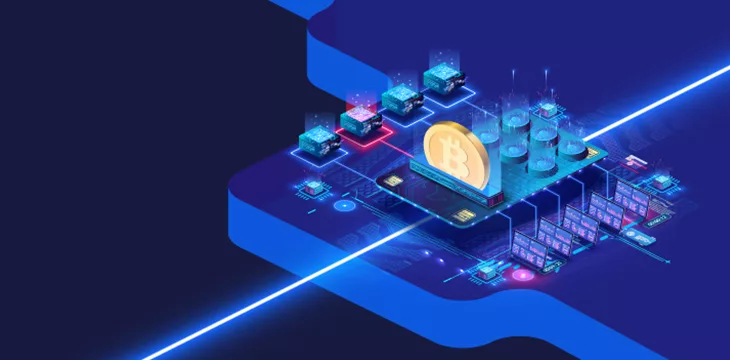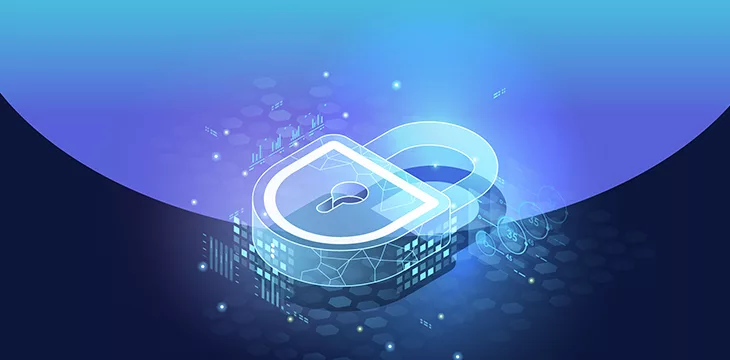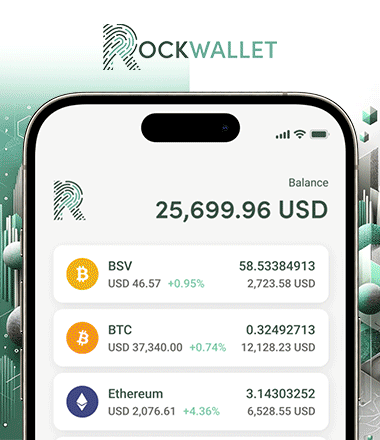
Blockchain offers near-endless possibilities that entice many to adopt it⎯whether out of curiosity about its cutting-edge technology or because of the promise of financial gain. As for the latter, one of the most exciting opportunities in blockchain is the ability to mine digital assets.This rewarding process opens an opportunity for a successful journey in the b world.
Although blockchain for beginners may seem daunting, it helps to ask the right questions. What is blockchain mining, and how does it work? Through this guide, you’ll better understand blockchain mining and the role of Bitcoin miners.

What is Blockchain Mining?
Blockchain mining is a cornerstone of the blockchain world. It’s comparable to hunting for digital treasure in the vast landscape of the internet.
The process of blockchain mining is intricate, requiring miners to verify and add transactions to a distributed public ledger called a blockchain. The task demands high levels of expertise, as it involves commitment and strategy.
Mining serves a dual purpose. For one, it ensures the authenticity and validity of transactions, preventing fraud and double-spending to help maintain the blockchain’s integrity. Plus, it incentivizes miners with digital currency as they dedicate their computational power to mining.
The allure of blockchain mining lies in its potential for financial rewards. Likewise, its role in the security of the blockchain makes it indispensable in the industry. Indeed, miners are the unsung heroes of the digital age, diligently working to maintain the integrity of the blockchain.
Types of Blockchain Mining
You can utilize different methods as a blockchain miner. With multiple options available, you must understand the choices at your disposal and the advantages a particular mining method brings to the table.
1. Cloud mining
Cloud mining is a convenient and hands-off venture. With this method, you don’t need to invest in and maintain mining hardware; instead, you lease computing power from a provider.
It’s perfect if you prefer an easy way to enter the mining game without the technological intricacies. It’s like outsourcing the heavy lifting to experts while you sit back and reap the rewards. Cloud mining lets you enjoy easy access and minimal setup, making it an ideal choice if you are a novice or have limited technical knowledge.
However, with the added service fees and “hands-off” nature of cloud mining, profits are blunted by added cost.
2. Individual mining
Individual mining is the way to go for your self-reliant and tech-savvy personality, especially if you have access to a low cost and highly reliable source of power. Here, you’re in control of the entire process. You set up your hardware, run the mining software, and work independently to search for valid hashes..
You receive everything for the mining you perform but also shoulder all the responsibilities. With your technical know-how, the right equipment, and a sense of adventure, individual mining might be your ticket to great returns.
3. Pool mining
Pool mining embodies teamwork in the world of blockchain. With this method, you combine your computational power with other miners to increase your chances of solving the mining puzzle and reaping rewards. It resembles a communal farming effort⎯everyone contributes, and when it’s time to harvest, you and everyone else get a fair share of the bounty.
As such, this mining option offers consistent and predictable earnings. It’s particularly attractive if you prefer a steadier income stream over the occasional “jackpot” that individual mining might bring. It’s a worthy choice that encourages collaboration while reducing risk.
How Does Blockchain Mining Work?
Blockchain mining collects digital transactions into secure, immutable blocks. From approving a trade to confirming a block, each phase is pivotal in maintaining blockchain security and transparency. Here’s a rundown of the blockchain mining process.
1. A user sends a transaction from a wallet application
A user’s journey into blockchain begins when they initiate a transaction. Think of it like writing a check in the traditional financial world, but the details are digital data instead. Simply put, the user approves a transaction through their wallet application and broadcasts it to the network.
2. The transaction becomes public to the network
Once initiated, the transaction is broadcast to the blockchain network, making it visible to all participants. This transparent visibility ensures that every node or computer in the network can see the transaction details.
This step is vital to the blockchain’s overarching goal of trust and security. It’s about letting everyone in the network have a look at the records, ensuring transparency and fostering trust among participants.
3. Miners gather multiple pending transactions from the network to create a block
Miners now act as overseers, determining which transactions get added to the blockchain. The selection is not random; often, mining prioritizes transactions with higher fees so that the potential rewards can be higher.
This step is also critical for optimizing the efficiency of blockchain mining. It ensures that miners use the space within a block effectively.
4. Miners confirm whether a particular transaction is valid
Node software checks to make sure every transaction is both valid according to the rules of the network, and that it has not been previously spent or “double-spent” on the blockchain.
5. The first miner to verify the transaction adds a new block to the blockchain with a signature or proof of work (PoW)
When the system discovers a valid hash, it proposes the transactions in that node’s block template as a block to the network. This block includes a set of transactions, a unique digital signature, and sufficient proof of work (PoW).
This signature doesn’t just vouch for the miner’s identity but also attests to the block’s validity. It serves as a digital notary stamp, indicating other miners’ confirmation regarding the transactions in the block.
6. The newly formed block serves as a foundation for succeeding transactions of a similar nature that miners will have to approve
With the addition of the new block to the blockchain, this structure becomes a gateway for future transactions to be part of the immutable ledger after the authentication from miners. Thus, the whole process or cycle of mining continues.
The Role of Bitcoin Miners in Mining
In the grand scheme of blockchain mining, miners are the backbone that safeguard the foundational aspects of what drives the entire system. Thanks to miners, blockchains are reliable and secure.
1. Reinforce security
When miners valid hashes through the PoW consensus mechanism, they do more than validate transactions. Essentially, they reinforce the digital fortress, making it nearly impervious to fraud and malicious attacks. Their collective computational power is a formidable shield, preventing malicious actors from tampering with the blockchain.
2. Maintain Blockchain’s decentralized nature
One of the blockchain’s defining features is decentralization⎯the absence of a central authority governing transactions. Miners operate independently as nodes in the network, working for the benefit of all participants in the blockchain instead of a singular party. This arrangement prevents any single entity from controlling the blockchain, making it a trustable entity.
3. Incentivize assistance
Miners aren’t just motivated by altruism; they receive monetary incentives for their service. The mining process is resource-intensive and demands significant investment in hardware and electricity expenses, and miners work diligently to maintain the system’s integrity.
In return, they receive their share of digital rewards and transaction fees. This incentivized assistance serves as the lifeblood of the blockchain, encouraging participation and reinforcing its very foundations.
Stepping Into the Blockchain World
Blockchain mining is a complex, multifaceted operation where transactions become secure, transparent, and decentralized. Blockchain miners are reliable keepers who safeguard the blockchain’s integrity by solving tricky puzzles and fortifying the digital vault against fraud. Meanwhile, the incentive system fuels miners’ participation in the blockchain cycle.
If this journey makes you eager to dive deeper into cryptocurrencies and blockchain, CoinGeek is the perfect starting point for beginners. For more knowledge, insights, or the latest developments in this dynamic space, visit CoinGeek.

 11-10-2024
11-10-2024 


